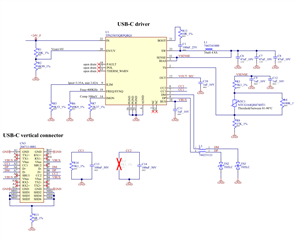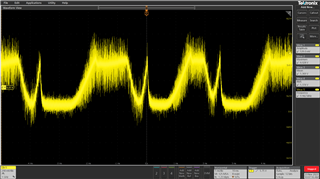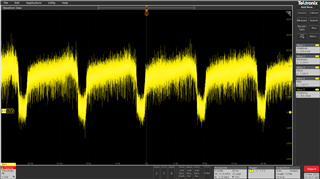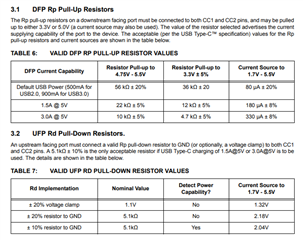Other Parts Discussed in Thread: TPS25854Q1EVM-164, TPS25854-Q1
Hello everyone,
I'm trying to use the TPS25855-Q1 chip to produce a USB-C charging board with an output of 5V 3A but I have some problems with charging currents greater than 1.5A. The circuit I created is similar to the one proposed in the TPS25854Q1EVM-164 evaluation board. Using a phone with an almost empty battery starts fast charging but suddenly the input voltage drops from 24V to 8V and tries to keep the output current constant at around 1.25A
I attached the schematic to this thread: in particular, for L1, I chose an inductance with 7A current saturation. The main voltage is 24Vdc and I limited the current of the power supply at 3A. I also tried with a USB-A tester with an adapter and it fails with 2A test current (the tester is Klein tools ET910). Could you help me with this issue, please?
Thanks a lot!
Thomas







